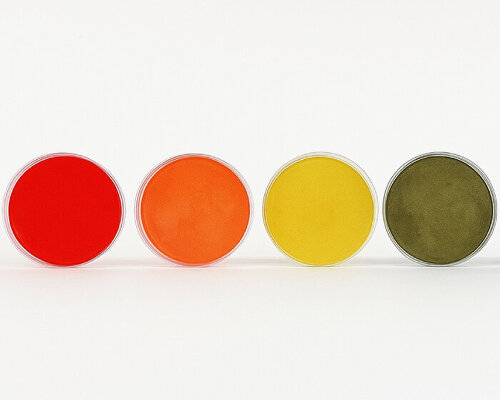Living bacteria can weave fabrics with dyes
Researchers at the Korea Advanced Institute of Science and Technology (KAIST) experiment with using living bacteria that grow, weave, and dye their own fabrics in every color of the rainbow. The team’s idea is to replace chemical-based textile production with a natural process that uses microbes instead of oil, plastic, or artificial dyes. In doing so, they have shown how living bacteria can create bacterial cellulose, a material that can be used as fabric, and how the same bacteria can also color it without the use of synthetic dyes. The base material used in the method then is bacterial cellulose, which is a fibrous network made by bacteria during fermentation.
It is produced when certain microbes grow in a nutrient-rich liquid and spin out long cellulose fibers. This material can also be harvested, cleaned, and dried to make a flexible sheet that can work like fabric. The researchers use a bacterium called Komagataeibacter xylinus, also known for producing cellulose. To add color, they use another group of bacteria that naturally make pigments that belong to two pigment families: violaceins and carotenoids. The former create colors from green to purple, while the latter create colors from red to yellow.
image courtesy of 祝 鹤槐, via Pexels
Textiles from bacterial cellulose come out in rainbow colors
At the beginning of the study, the researchers at KAIST tried to grow the two types of living bacteria for their fabrics that can grow and dye themselves together in the same container, but the process failed. The color-producing bacteria and the cellulose-producing bacteria interfered with each other’s growth. Sometimes, the cellulose layer did not form properly. Other times, the bacteria made very little color. To solve this, they changed the process into two different systems. For the cool colors such as blue, purple, and green, they used a delayed co-culture method, which means letting the cellulose-producing bacteria grow and form their network. Then, they added the color-producing living bacteria later, after the cellulose had already started forming for the fabrics that can dye themselves.
This timing allowed both types of bacteria to grow without stopping each other’s activity. For the warm colors such as red, orange, and yellow, they used a sequential culture method. In this case, the cellulose was grown first, removed from the liquid, and cleaned. After that, it was placed into a separate container that held the pigment-producing bacteria (the cellulose absorbed the natural color from these microbes). Using these two methods, the team created fabrics of bacterial cellulose with dyes in purple, navy, blue, green, yellow, orange, and red from the living bacteria. These sheets can be used as a form of fabric. The process allows the rainbow colors to be built into the material itself, without the need for separate dyeing or chemical treatment.
image courtesy of Eva Bronzini, via Pexels
The process can reduce waste and water pollution
After producing the fabrics with dyes from living bacteria, the researchers tested how stable the colors were. They washed, bleached, and heated the materials as well as exposed them to acid and alkaline conditions, and they found out that most of the colors stayed the same after these tests. The fabrics made with violacein pigments were especially durable, even more resistant to washing than some synthetic dyes. Each piece of fabric with dye is created in a lab container, with the living bacteria growing in liquid culture, forming cellulose as they feed on nutrients.
The cellulose can be harvested in sheets and then air-dried (the entire process uses living organisms instead of industrial machinery or chemical dye baths). The project, then, shows how materials can be produced using biology instead of petrochemicals. The process removes the need for harmful chemicals and can reduce waste and water pollution. However, it is still in the research stage, and the production speed is slower than in normal textile factories, and the cost is higher. The researchers estimate that it will take at least five years before this kind of material can be produced on a large scale, but they are hopeful that the design is a new process that could make textile production safer and less damaging to the environment.
image courtesy of the researchers at KAIST
image courtesy of Bernd Dittrich, via Unsplash
image courtesy of Moonstarious Project, via Unsplash
project info:
name: One-pot production of colored bacterial cellulose
institution: Korea Advanced Institute of Science and Technology (KAIST) | @official_kaist
researchers: Hengrui Zhou, Pingxin Lin, Ki Jun Jeong, Sang Yup Lee
study: here
The post living bacteria grow and dye their own fabrics in every color of the rainbow appeared first on designboom | architecture & design magazine.

